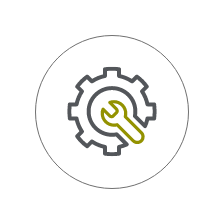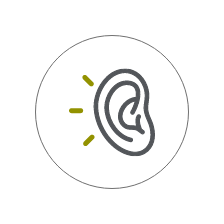Table of Contents
Electronic Health Record (EHR) systems are the backbone of modern healthcare operations, but transitioning to a new EHR can be a complex and disruptive process. As healthcare organizations continue to upgrade their systems, revenue cycle leaders face unique challenges in ensuring smooth operations during these critical transitions. Recent experiences from industry leaders offer valuable insights into best practices for managing EHR switches while maintaining financial stability and operational efficiency.
The Importance of Tailored Training
One of the most crucial elements in a successful EHR transition is comprehensive, tailored training for staff at all levels. Danelle Deller, Revenue Cycle Director of Training and Operations at VCU Health Systems, learned this lesson the hard way during their transition to Epic. Initially, VCU Health opted for generic, canned training provided by Epic, which proved inadequate for their specific needs.
"We chose, as an organization, to do the Epic canned training for our front-end staff and most of our staff, which meant that they were trained in August before we went live in December," Deller explained. "That did not go well for us."
The gap between training and implementation, coupled with the generic nature of the instruction, left staff ill-prepared for the realities of using the new system in their specific roles. This experience led VCU Health to create an entire training department dedicated to providing ongoing, specialized education for their EHR users.
Deller's team now includes 17 trainers, many of whom are former teachers. This unconventional approach has yielded impressive results. "We have made almost a $6 million difference in our organization in the past six weeks," Deller reported. "We can directly tie the trainings that we have done back to an original issue or error and have been able to correct it."
The success of this approach highlights the importance of continuous, role-specific training that goes beyond basic system functionality to address the unique needs of each department and role within the organization.
Adapting to Organizational Structure
Another critical lesson from VCU Health's experience is the importance of adapting the EHR system to fit the organization's specific structure and workflows. Deller noted that their initial implementation failed to account for the unique needs of a teaching facility.
"They set up our Epic like a canned Epic structure facility, and we're a teaching facility. So, we don't have a work queue for a location. We have departments, and 300 different people get into those departments," Deller explained. This mismatch between the system setup and the organization's actual structure created ongoing challenges that have taken years to address.
This experience underscores the need for healthcare organizations to be deeply involved in the build process of their new EHR systems. Revenue cycle leaders should ensure that the system is configured to support their specific workflows and organizational structure from the outset, rather than trying to adapt their processes to a generic system setup.

Managing Change and Building Trust
EHR transitions can be stressful for staff at all levels, and managing this change effectively is crucial for success. VCU Health found that listening to staff concerns and actively addressing them was key to building trust and overcoming resistance to change.
"We actually had a whole committee when somebody had a grievance that we would go sit with those people or that group, and we would listen to them," Deller shared. "We didn't say anything. We didn't talk to them. We didn't implement anything. We just listened, and we took notes. And having that piece where they felt heard made all the difference in the world."
This approach not only helped identify and address issues more effectively but also fostered a sense of ownership and involvement among staff, making them more receptive to the changes brought by the new system.
Balancing Technology and Patient Care
While the technical aspects of an EHR transition are crucial, it's equally important to maintain focus on patient care throughout the process. VCU Health faced significant challenges when they opened a new outpatient pavilion simultaneously with their EHR go-live, leading to extended wait times for patients.
In response, they made the difficult decision to temporarily shut down several floors of the new facility to redirect staff and resources to patient care. "We stopped a lot during the first couple days to just focus on patient care versus the system," Deller recalled. This patient-first approach helped mitigate the immediate impact of the transition on care delivery and demonstrated the organization's commitment to its core mission.

Looking to the Future
As healthcare organizations continue to evolve their EHR systems, revenue cycle leaders are increasingly focusing on leveraging technology to enhance patient experience and operational efficiency. VCU Health, for example, is implementing features like geofencing and kiosks to streamline the check-in process for patients who have completed pre-visit tasks through their patient portal.
"Our VIP Lane is if they have my chart, they've gone through, they've paid their co-pay, they've already scheduled for their appointment. We actually have geofencing that if they come in, they don't have to go through our registration desk," Deller explained. This approach not only improves patient satisfaction but also reduces wait times and administrative burden on staff.
Conclusion
Successful EHR transitions require a multifaceted approach that goes beyond technical implementation. Key strategies include:
Developing comprehensive, role-specific training programs that continue well beyond the initial go-live period.

Ensuring the EHR system is configured to match the organization's specific structure and workflows.

Actively listening to and addressing staff concerns throughout the transition process.

Maintaining a focus on patient care, even when facing technical challenges.

Leveraging new technologies to enhance both patient experience and operational efficiency.

By focusing on these areas, healthcare organizations can navigate the complexities of EHR transitions more effectively, minimizing disruptions to revenue cycle operations and ultimately improving both financial performance and patient care. As the healthcare landscape continues to evolve, the ability to manage these transitions successfully will become an increasingly critical skill for revenue cycle leaders.

 By
By 
